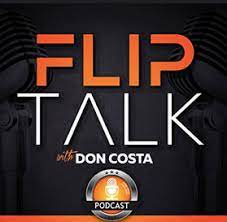|
Check out our new audio content!
Getting your Trinity Audio player ready...
|
By Edward Brown
The Prime Rate has been slowly increasing over the past six months, but real estate financing in the alternative sector in California has actually decreased. Why?
Competition between private lending companies in real estate [also known as hard money lenders] has increased over the past five years. This has led to brokers shopping around on behalf of their borrowers to get the lowest rates and points. Too many lenders have had a tremendous influx of capital from the private sector [investors] because of the low rates that banks pay on deposits as well as the volatility in the stock market that has spooked investors.
Prior to 2013, the difference in rates charged by private lenders and the Prime Rate was about 5%. Although the Prime Rate stayed stagnant up until 2018, the rate differential shrunk to about 3.5%. This yield compression was primarily due to the typical economics of supply and demand. There was too much of a supply of money pouring into California by investors, as these investors saw that real estate in California had not only stabilized [since The Great Recession], but had increased substantially, lowering the perceived risks of making private loans.

The default risk of making fairly conservative loans [less than 70% LTV of purchase] was minimized even further by an increasing real estate market. By the time the loan was eventually paid off due to refinance or sale of the underlying property, the LTV had gone down to as much as 40-50%. This was especially true in the fix and flip market for seasoned borrowers with good track records. Although real estate prices seem to have cooled off from the frenzy of buyers [especially those who continually paid over asking price], many of the larger lenders in the fix and flip market have gone as far as lending over 80% of purchase and up to 100% of the anticipated rehab. The amazing part is that these lenders are willing to lend their money out to these fix and flippers at rates as low as 7% and 1 point; this is unprecedented. Not only are these lenders taking more risk than in previous markets, but they are doing so at extremely favorable rates. One can only come to the conclusion that these lenders have a tremendous supply of capital that needs a home; especially those lenders who have investors who are promised a preferred return [usually in a Fund vehicle]. In these cases, idle money is a yield drag to the Fund and jeopardizes the payout to not only the investors but the profit to the manager as is typical in a mortgage pool Fund.
Idle money in a Fund is usually held in a low interest bearing account at a bank awaiting deployment. These deposits need to be liquid, as most private lenders market themselves as speedy – one of the advantages over a typical bank. In addition, their private placement memorandums dictate that idle funds be held in an FDIC insured account; thus, the low yield on these deposits to the Fund.

When borrowers shop around for California lenders, they may find two to five lenders willing to make them the loan they need at favorable terms. Most of the time, the borrowers enlist a mortgage broker who does the shopping for them. Although the mortgage broker may have favorite lenders he/she works with, the broker also knows that many sophisticated borrowers work with more than one broker, so it is the first one who can get the deal done who usually wins out. In addition, the broker realizes that some commission is better than none. Many times, these brokers quote lower than normal rates and points in order to secure the deal. What once might have been quoted as a 9.5% and 3 point deal is now hovering around 8.75% and 1.5 points. [As pointed out earlier, certain fix and flip lenders are charging even less.] The lender usually charges points, so both the broker and the lender are earning less on each transaction because of the lowering of the points that have to be shared between them. Most of the interest rate is earned by the lender’s Fund, but there is overhead that needs to be subtracted as well as the preferred return promised to the investors of the Fund. A 7% preferred return is not uncommon, but, the economics appear to dictate that a preferred return of closer to 6% may be on the horizon.

If interest rates paid by banks to depositors stay relatively low, then investors may not balk at a lower preferred yield; however, if the Prime Rate continues to rise, one might believe that interest rates on deposits at banks will follow. At some point, in order to attract investors, private lenders will have to increase the rates paid to their investors. The only way to do that would be for these lenders to start increasing the rates they charge borrowers, as profit margins to the lenders have been squeezed to its lowest level in many years. It will be those lenders who can run their companies “lean and mean” who will have the advantage in this market and the one to come.
Outside of California, lenders have enjoyed higher yields, but that comes with the potential instability of the real estate market. Many investors have chosen to take the path of least resistance – location, location, location, and stay conservative by earning less than other states may provide, but potentially reducing the risk. Generally, stable California markets have severely reduced the risk of loss of principal and, consequently, produced lower yields to investors/lenders. However, since a loss of 20% of principal in one year means that one has to make 25% the following year just to breakeven over the two year period, the prudent investor/lender might be wiser to accept a lower yield and not balk too much at a lower yield; thus the quandary of investing in California.

Edward Brown
Edward Brown currently hosts two radio shows, The Best of Investing and Sports Econ 101. He is also in the Investor Relations department for Pacific Private Money, a private real estate lending company. Edward has published many articles in various financial magazines as well as been an expert on CNN, in addition to appearing as an expert witness and consultant in cases involving investments and analysis of financial statements and tax returns.



















